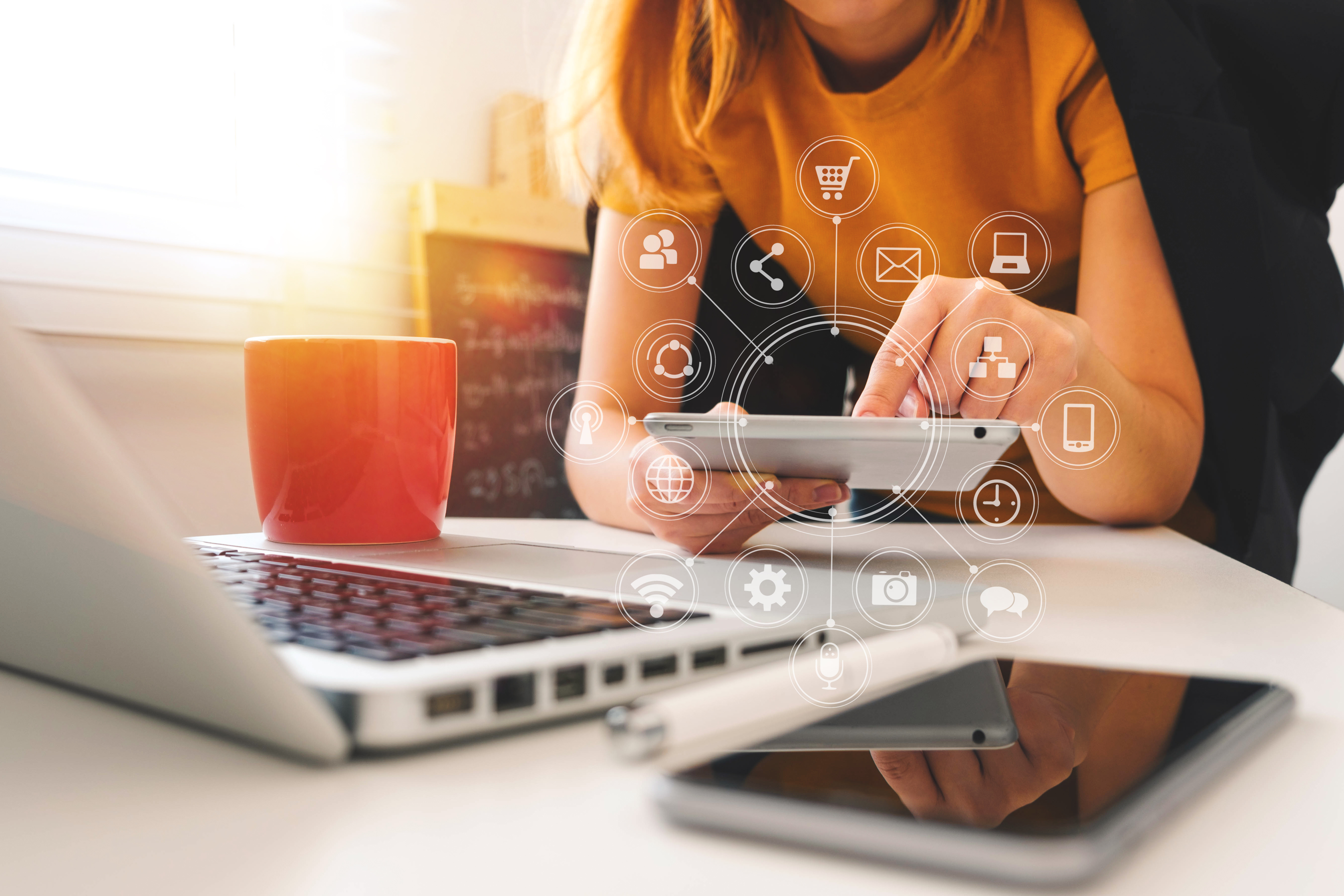Over the past several years, omnichannel has been a significant driver of retail and ecommerce experiences and a core driver of the modern customer journey. Omnichannel retail is the seamless integration of all shopping channels, both online and offline. It allows consumers to shop however and whenever they want, while providing a consistent experience across all engagements with your business, regardless of how they choose to shop.
Considering this trend is not likely to slow down—quite the opposite, it’s likely to become an even more integral, but complex, part of the future of commerce—omnichannel fulfillment has also grown more popular so businesses can fulfill orders from any channel with better visibility and unified inventory management.
As we approach 2025, it’s clear that businesses who do not embrace an omnichannel approach will be at a disadvantage in the very near future. Read on to learn more about the key omnichannel trends both ecommerce operators and third-party logistics (3PL) providers need to know to stay ahead of the curve and remain competitive.
The Ecommerce “Omni” Evolution
Prior to the pandemic, omnichannel retail strategies were picking up steam, yet many retailers were struggling to seamlessly integrate ecommerce and offline storefronts. This led to many challenges, such as inconsistent inventory levels and a disjointed customer experience.
As COVID accelerated the adoption of omnichannel retail, consumers were forced to shop online when brick and mortar stores were unavailable during lockdowns. Retailers who had already invested in omnichannel retail were well-positioned to meet consumer needs during this time, with others forced to rapidly try to catch up.

Though the pandemic is (mostly) over, it still has a lingering impact on the retail industry and supply chain. In fact, according to Coherent Market Insights, the global omnichannel retail market “is expected to reach $19.51 billion by 2030, growing at a compound annual growth rate (CAGR) of 14% from 2023 to 2030.”
Practically everyone is more accustomed to online shopping (especially on mobile devices, with m-commerce expected to make up 62% of all ecommerce sales by 2027, per Statista), leading to higher consumer expectations for fulfillment. Additionally, they are now using more channels than ever before, and they expect retailers to provide them with a seamless shopping experience across all of these various channels.
Consumers thrive with direct shopping on social media, chatting with virtual assistants, purchasing in-store, and more. In a highly competitive market, brands are scrambling to meet their needs by offering multiple shopping channels, and many are even providing voice search and commands in their online stores for buyers to make purchases.
As shopping expectations change, we’re seeing increased focus on:
- Buy online, pick up in-store (BOPIS) and buy online, return in-store (BORIS)
- The expansion of social commerce across more platforms and media types
- The use of artificial intelligence (AI) such as AI workflow tools to boost productivity and machine learning (ML) for improved customer experiences
The Future of Omnichannel Order Fulfillment
Many people think of omnichannel in terms of retail and ecommerce, but it also encompasses logistics. Consumers have high expectations due to giants like Amazon offering same-day or two-day delivery and simple returns. Buyers want a truly seamless process with fast, reliable delivery, and both ecommerce brands and 3PLs can meet those needs.

Omnichannel fulfillment is increasingly important because consumers want to receive orders quickly and conveniently, regardless of when or where they placed them.
It allows retailers to provide a better shopping experience for their consumers, improve their inventory management, and reduce costs. And for 3PLs serving ecommerce merchants, omnichannel fulfillment is a key differentiator that can drive long-term success.
Omnichannel fulfillment is about developing successful strategies and processes to manage burgeoning inventory, picking, packing, and shipping from a specific location to a multitude of multichannel consumers around the world. Effective omnichannel fulfillment for 3PL processes must focus on optimizing operations, streamlining outbound processing, and ensuring efficient shipping.
Here are some tips for embracing the future of omnichannel fulfillment:
- Work with a 3PL to invest in a distributed inventory model to get orders to consumers more quickly, regardless of where they are located. Explore Extensiv’s Fulfillment Marketplace to find the perfect fulfillment partner for your business!
- Offer a variety of fulfillment options so consumers have flexibility and can choose fulfillment options that are most convenient for them. Retailers should consider offering options such as ship-to-store, in-store pickup, same-day delivery, and curbside pickup.
7 Omnichannel Retail & Fulfillment Trends to Watch Going into 2025
1. The Staying Power of BOPIS & BORIS
For the foreseeable future, the need for BOPIS will remain and even grow. Post COVID many people want to avoid crowded stores and standing in line. Additionally, BORIS has become a popular way for shoppers to return products in-person (and often find a replacement while in the store, making BORIS a great alternative to shipped returns that allow retailers to recoup some of the profits from the return).
How are businesses embracing this trend? Some brands have designed separate entryways for BOPIS shoppers to pick up merchandise. Also, many retailers have designated particular parking spaces for BOPIS. Smart lockers, which are opened using a PIN or barcode that is delivered via text message, email, or mobile app at the time of purchase, are also popular with BOPIS shoppers because they don’t require human interaction. A retailer simply fills the locker with merchandise and the consumer picks it up at their convenience.
Embrace the trend:
- Build a seamless shopping experience across all sales channels, and make it easy for consumers to track orders. and return or exchange products regardless of how purchases are made.
- Make it easy for consumers to return or exchange products regardless of how purchases are made.
- When possible, offer free returns and exchanges, multiple return options (such as in-store returns, mail-back returns, and curbside returns), and process returns and exchanges quickly and efficiently.
2. The Expansion of Social Commerce
Social commerce is the buying and selling of goods and services on social media platforms. It allows retailers to reach new audiences, promote their products in a more engaging way, and build better customer relationships through touchpoints consumers are already using. Trends indicate that consumers are more likely to buy products from brands they follow on social media, and a growing number of brands are likely to ramp up social selling through videos (for example, on Instagram and TikTok) as consumers are increasingly watching this content.
Embrace the trend:
- Be active on social media platforms where your target audience is present to build relationships with your consumers and create a community around your brand.
- Sell your products directly on social media platforms.
- Create high-quality and engaging video content.
- Partner with social media influencers to promote your products.
3. The Growth of the Creator Economy
The creator economy is booming, with more people creating and selling content online. Retailers are responding by partnering with creators to reach new audiences and promote their products. This can help retailers reach new audiences and build relationships with potential consumers. Retailers can also use creators to create sponsored content and promote their products in a more authentic way.
Embrace the trend:
- Start a creator marketing program to identify and partner with creators who are relevant to your audience.
- Allow creators to be creative and authentic, but be sure their messaging aligns with your brand.
- Track the results of your creator marketing campaigns to see what is working, so you can optimize your campaigns.
4. The Spread of AI & ML
Retailers and 3PLs are using artificial intelligence (AI) and machine learning (ML) in a variety of ways, including to improve product recommendations, introduce personalized experiences, and optimize inventory management. It can help retailers and logistics providers improve their bottom line by boosting efficiency, reducing costs, increasing profitability, and improving customer relationships.
Embrace the trend:
- Identify and invest in technologies with AI & ML functionality—including customer support applications like chatbots, inventory management software (IMS), demand forecasting tools, order management systems (OMS), and other fulfillment software—that are relevant to your business.
- Offer personalized shopping experiences with data and analytics to recommend products, tailor marketing messages to individual consumers, and boost customer loyalty.
- Train your staff on how to use these solutions effectively to automate tasks.
5. Increased Focus on Data Analytics
In today’s competitive retail landscape, retailers need a deep understanding of consumers and shopping habits. This is where data and analytics come in. By collecting and analyzing data from a variety of sources, retailers can gain insights into consumer behavior, product preferences, and market trends.
This information can be used to improve a wide range of aspects of the retail business, such as product development, marketing and sales, and operations, for example predicting customer demand and allocating inventory appropriately.
Embrace the trend:
- Invest in data analytics tools.
- Train your staff on how to use data to make informed decisions.
- Use data insights to improve the consumer experience, increase sales, and reduce costs.
6. Augmented Reality (AR) & Virtual Reality (VR)
Augmented reality (AR) and virtual reality (VR) technologies can create immersive shopping experiences through metaverse ecommerce. AR overlays digital information onto the real world (e.g., a consumer "placing" furniture in their home before buying), while VR creates a completely simulated environment (for example, exploring a virtual store).
Embrace the trend:
- Experiment with different AR and VR technologies to see how they can be used to improve the consumer experience.
- Partner with AR and VR companies to create custom AR and VR experiences for your consumers.
- Use AR and VR to give consumers a more immersive and engaging shopping experience.
7. Showrooming
Showrooming is the act of visiting a physical store to browse and try on products, but then purchase them online (often for a lower price). It’s becoming more common as consumers access more information and pricing options online.
There are pluses and minuses here; on one hand, the consumer may purchase from you when they might otherwise have chosen a competitor who had a similar or lower price. However, when consumers are showrooming and not purchasing from the retailer while visiting, it could lead to lost sales and decreased revenue, especially if the expectations of in-store experiences aren’t met.
Embrace the trend:
Set prices that are competitive with online retailers.
Offer convenient fulfillment options—such as BOPIS and same-day delivery—and services not available online such as installation and technical support.
Create a unique and engaging shopping experience that gives consumers a reason to shop in their stores.
How Omnichannel Trends Affect 3PLs & Ecommerce Merchants
Omnichannel trends create new opportunities and challenges for 3PLs, warehouses, and ecommerce merchants. By understanding how these trends affect your business—and adapting accordingly by adopting omnichannel strategies—you can position yourself for success as the landscape evolves.
Continue to Fuel Consumer Expectations
The omnichannel retail experience has created higher consumer expectations, and consumers now expect a seamless and convenient experience across all channels. Additionally, consumers expect a variety of fulfillment options, including same-day delivery, in-store pickup, and home delivery. Omnichannel fulfillment software plays a vital role in streamlining your operations so you can fulfill orders from any sales channel efficiently.
Increase the Need for Real-Time Visibility
Omnichannel retail and fulfillment requires real-time visibility into inventory, orders, and shipments across all channels to guarantee accurate inventory management. Using the right software can help you avoid headaches like over-selling or mismanaging individual SKUs.
Heighten the Importance of Data Analytics
Omnichannel retail generates vast amounts of information, including consumer behavior, sales metrics, and inventory data. Advanced fulfillment software can help you collect and analyze data to improve inventory management, demand forecasting, fulfillment operations, and consumer experiences.
Drive Competition in the Logistics Industry
Omnichannel retail is increasing competition among 3PLs as retailers seek providers offering a comprehensive omnichannel solution. To succeed in the omnichannel era, 3PLs need to build strong partnerships with retailers (their customers) and other stakeholders in the supply chain. 3PLs may also want to consider partnering with other logistics providers to build expanded fourth-party logistics (4PL) networks to meet growing ecommerce needs.
Embrace Omnichannel Trends with Extensiv
In today's rapidly changing market, it's more important than ever to keep pace with emerging trends. Extensiv’s platform can help you do that with our feature-packed software:
- Data-driven insights: Get access to a suite of analytics and reporting tools to identify emerging trends and capitalize on them.
- Agility: Extensiv's platform is adaptable, growing with you as you scale and your business needs change so you can easily and quickly adjust your strategies.
- Innovation: Extensiv is constantly innovating and adding new features to its platform to help businesses stay ahead of the curve as new trends emerge.
- Real-time visibility: Get visibility into both inventory levels across all warehouses as well as all order data to quickly and easily fulfill orders from any sales channel, even when orders are complex or require multiple shipments.
- Shipping flexibility: Ship orders through a variety of carriers and shipping methods to meet retail customers' needs and provide the best possible shipping experience for customers.
Request a demo today to learn more about Extensiv’s solutions for brands or our solutions for 3PLs!
-
You’ll read about:
Be the first to know
Subscribe to our newsletter







